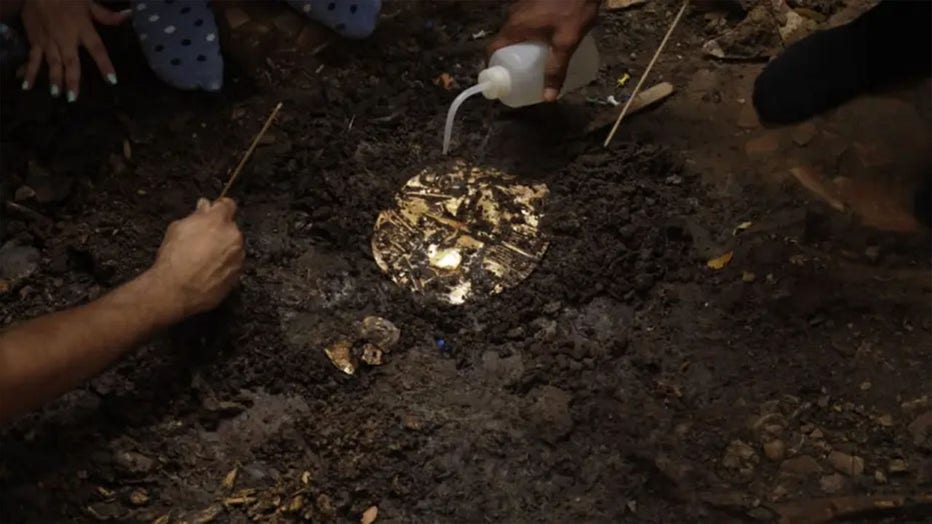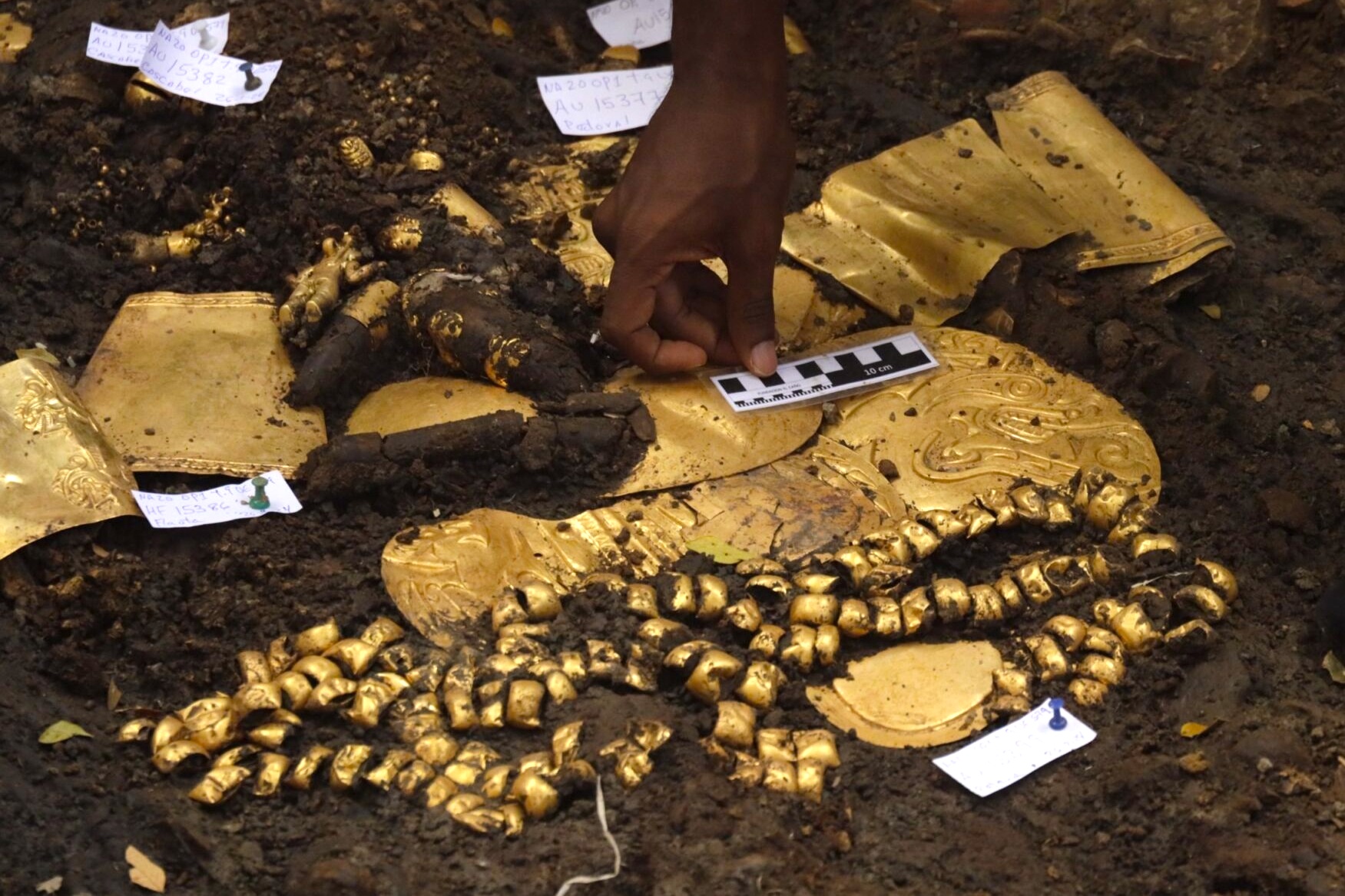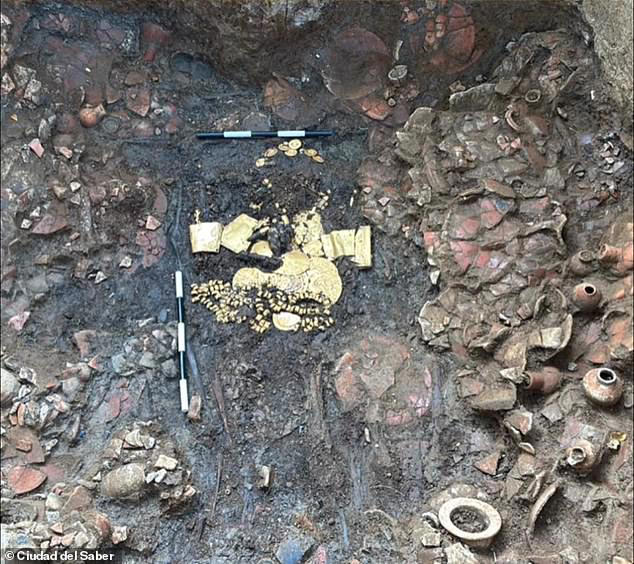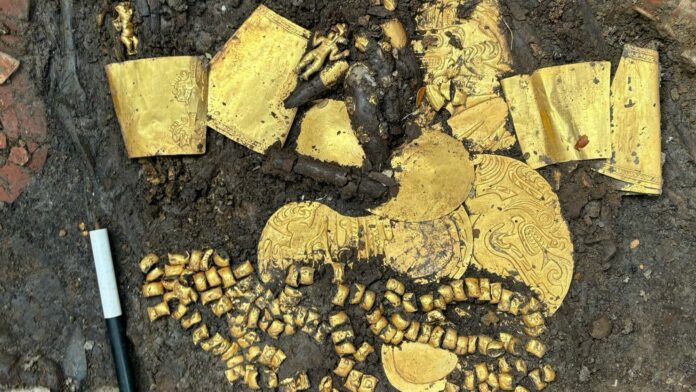Recent excavations at an archaeological site in Panama have unearthed a remarkable discovery: the tomb of an ancient religious leader buried over 1,200 years ago, alongside a cache of gold objects and multiple sacrificial human remains. This finding sheds new light on the burial practices and societal structures of pre-Columbian Panama.
Discovery at El Caño Archaeological Park

Excavations at El Caño Archaeological Park, located in Coclé province, have revealed the ninth tomb since the site’s excavation began in 2008. According to a March 1 news release from Panama’s Ministry of Culture, this site is renowned for its rich pre-Columbian history and lavish burial chambers. The newly discovered tomb, dating back to around 700 AD, is believed to belong to a high-status individual.
Significance of the Tomb
Dr. Julia Mayo, the excavation leader and director of the El Caño Foundation, explained that the tombs at El Caño served as resting places for society’s elite. The presence of gold and ceramic artifacts, along with the central position of the body, indicates the high status of the deceased. The tomb’s occupant, dubbed the “Lord of the Flutes,” was likely a religious leader, inferred from the animal bone flutes found alongside him, which were probably used in religious ceremonies.
Ritual Death and Sacrifice

The civilization surrounding El Caño treated the site as sacred, worshipping ancestors who were remembered for their significant deeds. Dr. Mayo highlighted that this discovery underscores the ritual death practices associated with high-status funerary rituals. The Lord of the Flutes was not alone in his grave; researchers found numerous other human remains, suggesting that these individuals were sacrificed to accompany him to the afterlife.
Social Order and Burial Practices
Patterns observed in the tombs, including the latest one, indicate that sacrificial practices were common for high-status burials. The El Caño site is divided into two sectors: one for high-status burials with multiple bodies and another for single-body graves. The excavation of the ninth tomb is ongoing, but previous tombs have revealed anywhere from eight to 32 bodies.
The Role of Religion
While earlier discoveries at El Caño included military leaders buried with weapons, the Lord of the Flutes was buried with religious artifacts, highlighting the importance of religion in this society. This distinction suggests differing roles and statuses within the community.
Unique Burial Positioning

The Lord of the Flutes was buried face down, atop the body of a woman. According to Nicole Smith-Guzmán of the Smithsonian Tropical Research Institute, this positioning is unusual, though face-down burials were common in the region at the time. The exact relationship between the man and the woman remains unknown, but it implies a significant social connection.
Gold Adornments and Social Alliances
The tomb contained numerous gold artifacts, including pectorals, belts, bracelets, necklaces, and earrings. These adornments were likely used to establish and reinforce social and political alliances. The presence of stylistically similar artifacts from the Quimbaya region of Colombia indicates extensive interaction and exchange between populations in central Panama and northern South America.
El Caño: A Ceremonial Center

Experts believe El Caño functioned as a regional ceremonial center or necropolis for elite members of society. Despite attempts to identify the tombs’ occupants through DNA analysis, the region’s hot and humid climate has hindered preservation. However, this discovery provides valuable evidence for further studies on the chiefdoms in Panama and their interactions, political economy, religious practices, and gender roles.
Conclusion
The discovery of the Lord of the Flutes’ tomb at El Caño Archaeological Park offers a fascinating glimpse into the burial practices and social structures of pre-Columbian Panama. As researchers continue to explore this site, they hope to uncover more about the complex relationships and cultural practices of these ancient civilizations. This finding not only enriches our understanding of Panama’s cultural heritage but also opens new avenues for archaeological research.
